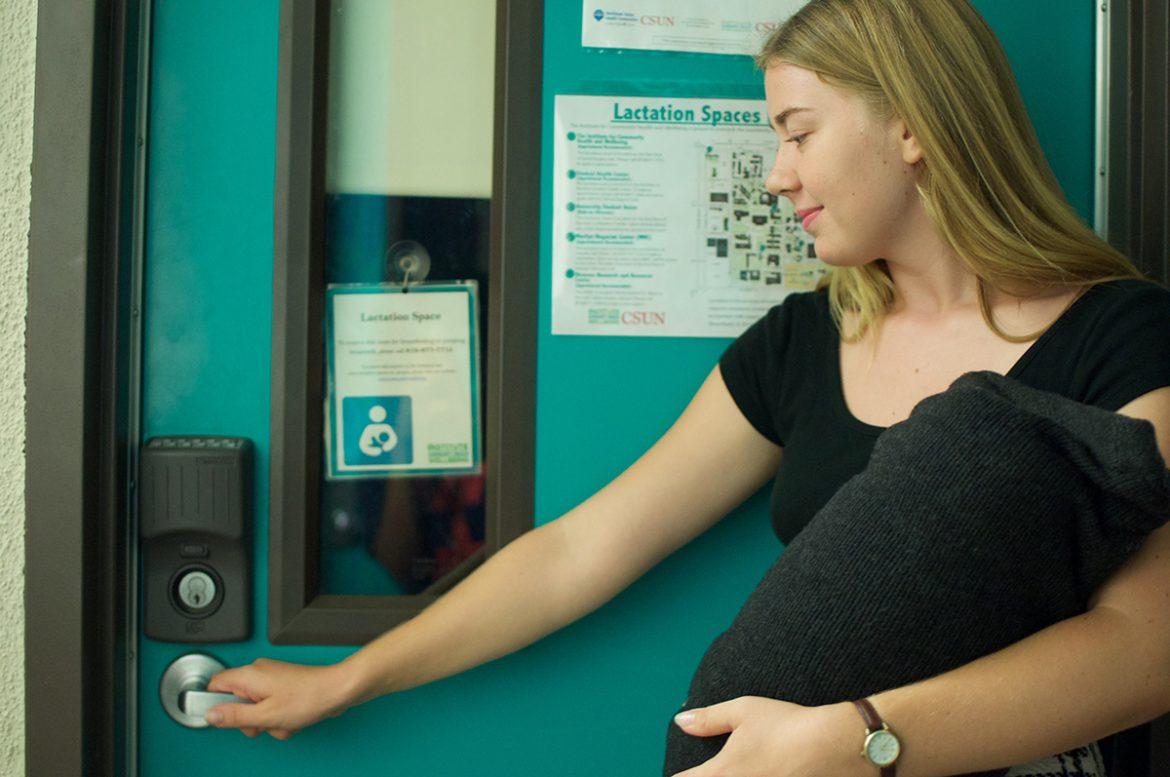Since the spring of 2015, lactation spaces have been promoting the wellbeing of mothers and their children on CSUN’s campus.
The university carries five different lactation spaces throughout campus for women who need to nurse. This is a cleaner, safer and overall better alternative than having to go to a bathroom or to the car in order to breastfeed or pump breast milk.
Besides advocating the process of lactation and breastfeeding throughout the university’s community, the lactation spaces promote and encourage familiarization and education on what lactation is.
Lactation is not simply breastfeeding, but constantly removing the milk on a schedule in order to produce and preserve it for the baby.
Santa Susana Hall created its first lactation space in the spring of 2015 in order to create a comfortable and private space for women to lactate. The project coordinator for the Institute for Community Health and Wellbeing, Cassidy Owen, and administrative coordinator, Danielle de Asis, run the Santa Susana Hall location.
Owens said the purpose of the lactation spaces are to “encourage women, who are breastfeeding, once they go back to school.”
CSUN’s lactation accommodations campaign to create awareness about the spaces and the services provided from the different locations across the campus.
“We want to try and get rid of the stigma of breastfeeding,” said Danielle de Asis.
Owens and de Asis have surveyed users of the Santa Susana Hall lactation space as a way of getting feedback from mothers to know how to better the services and experience of lactating at their location.
They have also tracked that they have had a total of 62 users from July 2016 through June 2017. The lactation space at Santa Susana Hall has been used 873 times during this period.
Dr. Dianne Philibosian, the former Director of the Institute for Community Health and Wellbeing, was present during the establishment of the lactation spaces. She felt it was crucial to have acknowledgment of lactation and that there was a comfortable quiet space reserved for lactation.
The space is for mothers to “devote their mind to what they’re doing at that moment in time,” said Dr. Philibosian.
Dr. Philibosian shared that the Santa Susana Hall lactation space is a host on Thursdays for the WIC (Women, Infants and Children) program, “which is a nutritional support program for income qualifying women.” Mothers are able to meet with WIC representatives to get information and find out if they qualify.
Dr. Philibosian said, “we know that breastfeeding has advantages not only for the infant but also the mother. It promotes that attachment between mother and infant.”
A goal for the lactation spaces is “anything that we can do to promote the attachment will be growing healthier, stronger, and more resilient children,” according to Dr. Philibosian.
Alana Harris, a third year Kinesiology student said, “I think breastfeeding is a very natural and normal thing to do. I know there is a lot of stigma against mothers who breastfeed in public and I had no idea CSUN has places for mothers to breastfeed. If I were a mother I would most definitely take advantage of the spaces CSUN offers.”
Dr. Merav Efrati teaches courses in Lactation Education and promotes the process of breastfeeding to better the health of the child and the mother. The Lactation Education program at CSUN provides students with proper knowledge and skills through lecture and training to hopefully take on the task of being healthcare professionals with an area of expertise in lactation education.
If you are interested in visiting a lactation space on campus be sure to call ahead to make sure you can reserve a space. Depending on the location, the majority of the lactation spaces recommend users to make an appointment while some may also welcome walk-ins.











